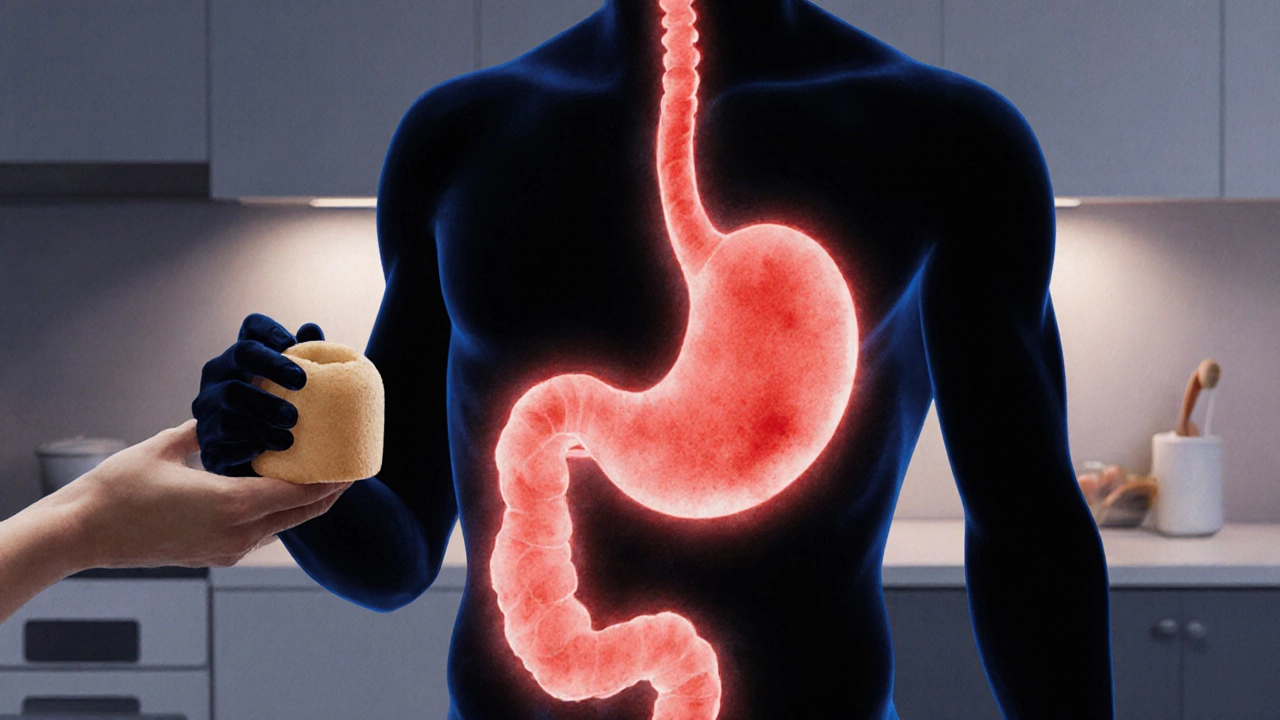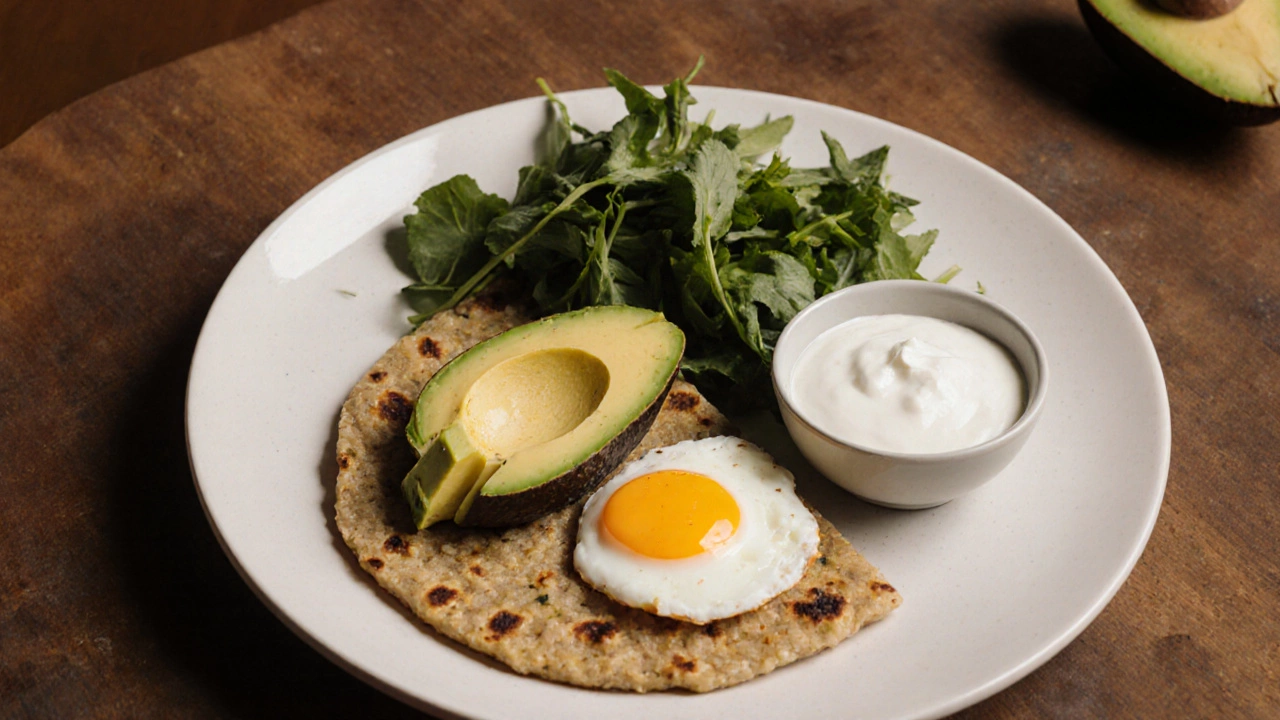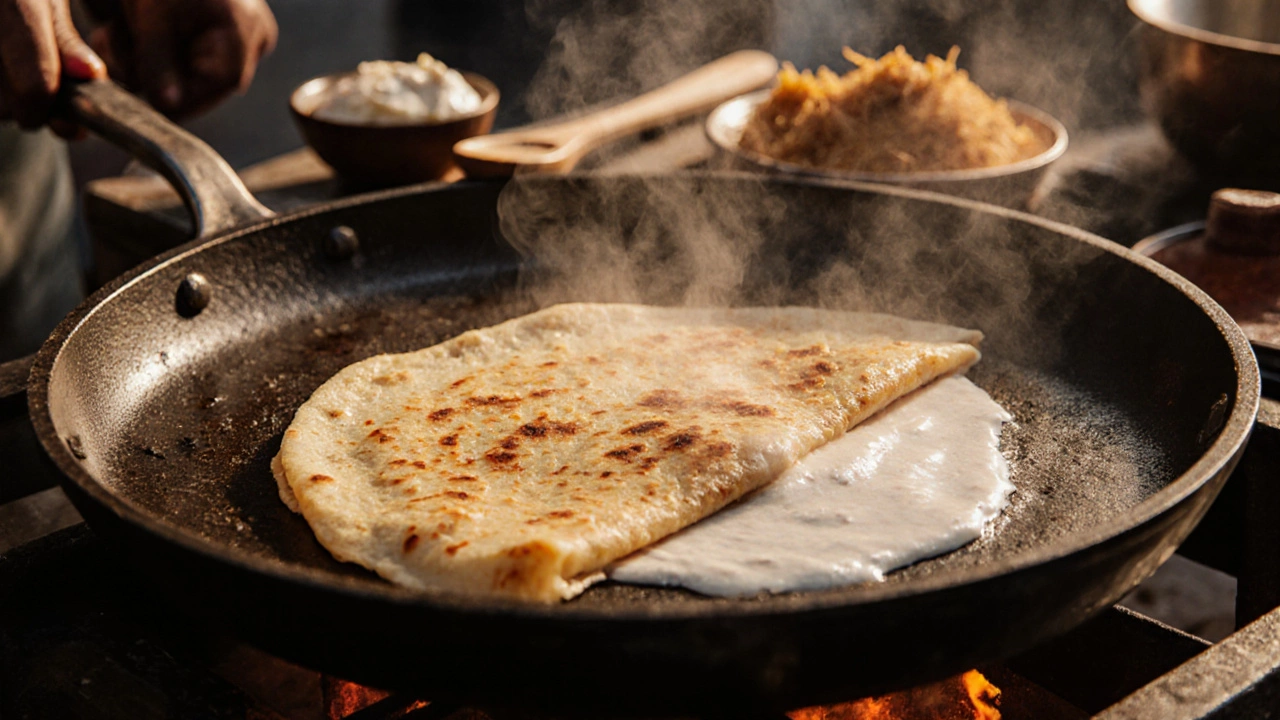Dosa Glycemic Load Calculator
Dosa Glycemic Impact Calculator
When you hear the sizzle of a hot Dosa is a thin, fermented crepe made from rice and urad dal batter on a griddle, your mind might wander to breakfast cravings, street‑food nostalgia, or even a quick dinner fix. But if you’re watching your blood sugar the concentration of glucose circulating in the bloodstream, the question that really matters is: does eating dosa cause a spike?
Understanding Glycemic Index and Glycemic Load
Two numbers help us predict how a food will affect glucose levels: the Glycemic Index a ranking from 0‑100 that shows how quickly carbohydrates raise blood glucose and the Glycemic Load the product of GI and the amount of carbs in a typical serving. A high GI (70+) means rapid absorption, while a low GI (55‑) signals a slower, steadier rise.
What’s Inside a Typical Dosa?
- Rice (≈ 80‑85% of the batter)
- Urad dal (black gram) (≈ 15‑20%)
- Water and a pinch of salt
- Optional: a splash of oil for cooking
The fermentation process-usually a 6‑12 hour soak at room temperature-breaks down some starches, creating natural acids that can lower the GI a bit. However, the base ingredients are still mostly simple carbohydrates.
Carbohydrate Profile of Dosa
A 100‑gram serving of cooked dosa (about one medium‑sized piece) contains roughly 30 grams of carbohydrates the macronutrient that the body converts into glucose. Of those, about 1 gram is fiber, while the rest are digestible starches.

Comparing Glycemic Values
| Food | Glycemic Index (GI) | Carbs (g) | Glycemic Load (GL) |
|---|---|---|---|
| Dosa (plain, 100 g) | 55 | 30 | 16.5 |
| Idli (steamed, 100 g) | 62 | 24 | 14.9 |
| White toast (2 slices) | 75 | 28 | 21.0 |
| Whole‑grain toast (2 slices) | 55 | 28 | 15.4 |
| Apple (medium) | 38 | 25 | 9.5 |
Notice how plain dosa lands right on the cusp of the “moderate” GI range. It’s not as high as white toast, but it’s definitely higher than most fruit.
Why Dosa Can Affect Blood Sugar - The Science
When you bite into a dosa, the quickly digestible starches release glucose into your bloodstream within 30‑45 minutes. If you’re insulin‑sensitive, your pancreas pumps enough insulin to shuttle that glucose into cells, and the spike is brief. For people with Diabetes a chronic condition where blood‑glucose regulation is impaired, the same load can linger longer, leading to higher post‑meal readings.
Factors that intensify the rise:
- Large portion size - two or more dosas can double the carb load.
- Skipping the fermentation - a batter that’s only minimally fermented retains more resistant starch, raising GI.
- Adding sweet chutneys or sugary sambar - extra sugars push the overall GL up.
How to Make Dosa More Diabetes‑Friendly
- Extend fermentation. Let the batter sit 12‑24 hours in a cooler spot. Longer fermentation produces more lactic acid, which helps lower the GI.
- Swap half the white rice for whole‑grain millets cereals like finger millet or foxtail millet that have higher fiber and lower GI. The texture stays crisp, but the carb quality improves.
- Add a tablespoon of ground flaxseed rich in soluble fiber and omega‑3 fatty acids to the batter. It boosts fiber and creates a gel that slows digestion.
- Pair with protein‑rich fillings - paneer, boiled eggs, or even lentil‑based sambar. Protein blunts glucose spikes.
- Control portion: one medium dosa (≈100 g) provides a manageable GL of ~16.5. Add a side of leafy greens to fill up without extra carbs.

Real‑World Scenarios
Scenario 1 - Breakfast on a Workday
Rohit, a 35‑year‑old software engineer with type‑2 diabetes, used to eat two dosas with coconut chutney. His post‑breakfast glucose often hit 180 mg/dL. After switching to a 50‑50 rice‑millet batter, extending fermentation to 18 hours, and adding a boiled‑egg filling, his peak dropped to around 130 mg/dL.
Scenario 2 - Weekend Brunch
Lena, a 28‑year‑old fitness enthusiast without diabetes, loves dosa with avocado. She found that keeping her serving to one piece and topping it with a side of Greek yogurt kept her energy steady without an afternoon crash.
Quick Checklist: Does This Dosa Suit Your Blood‑Sugar Goals?
- Is the batter fermented ≥12 hours? ✅
- Are you using whole‑grain or millet blends? ✅
- Portion ≤1 medium dosa? ✅
- Accompanied by protein or high‑fiber sides? ✅
- Added sweet sauces or sugary chutneys? ❌
If you check most boxes, the dosa is likely a safe choice for your glucose management plan.
Bottom Line
Plain, white‑rice dosa sits in the moderate‑GI zone, meaning it can raise dosa blood sugar levels, especially if you eat large portions or pair it with sugary toppings. However, by tweaking the batter, controlling portion size, and adding protein or fiber, you can enjoy this beloved South‑Indian staple without dramatic spikes.
What is the glycemic index of a plain dosa?
A plain, fermented dosa typically scores around 55 on the glycemic index, placing it in the moderate range.
Can I eat dosa if I have type‑2 diabetes?
Yes, but keep the portion to one medium piece, use a batter with whole‑grain or millet, ferment it longer, and pair it with protein or high‑fiber sides.
How does fermentation affect the glycemic response?
Fermentation creates organic acids that break down some starch, lowering the GI slightly and slowing glucose absorption.
What are low‑glycemic alternatives to traditional dosa?
Try millet‑based dosas (finger millet, foxtail millet), quinoa dosas, or adding ground flaxseed or chia seeds to the batter.
Does adding oil to the pan raise the glycemic index?
Oil doesn’t change the GI, but it adds calories and can affect overall energy balance, which matters for weight management and insulin sensitivity.
